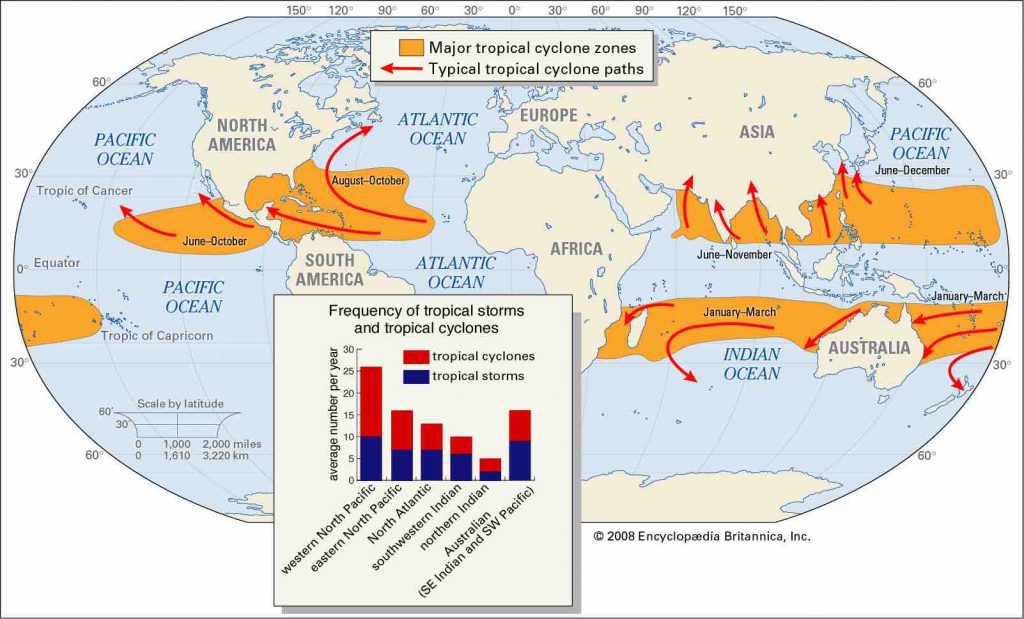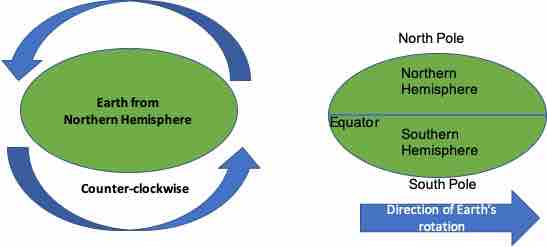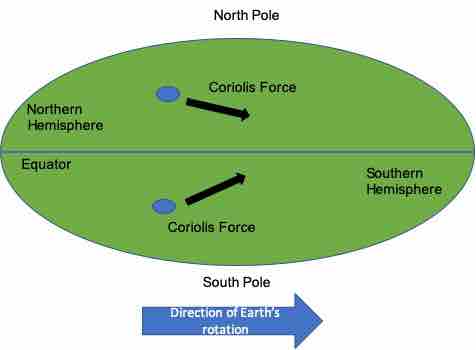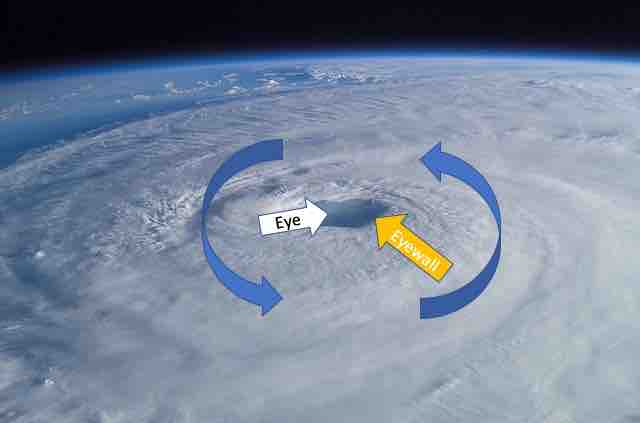Table of Contents
Preface
Cyclone is a well-known term as far as natural disasters are concerned. Recently, the super tropical cyclone Amphan hit the regions of India, Bangladesh, and Sri Lanka, causing considerable damage and loss of lives. So, what is a tropical cyclone? How are tropical cyclones formed? What are their characteristics? I will try to answer all of these questions in a simple way through this post. Sit tight!
What are Cyclones?
In recent years, like other natural disasters: earthquakes (Check out our article on How do Earthquakes happen?), volcanic eruptions, tsunamis, etc., tropical cyclones have caused great devastation in various regions across the globe.
A cyclone, in simple terms, is an intense atmospheric disturbance around a low *atmospheric pressure area. The cyclones are marked by high-speed winds and clouds spiraling the low-pressure area leading to violent storms.
*Atmospheric Pressure is the force exerted by the air column surrounding the earth on its surface. A point to note here is that the layer of the air above the earth is neither static nor of the same thickness. It moves and gets distributed with no fixed pattern. Thus, atmospheric pressure varies in different areas of the earth. At some places, the pressure is high due to a thick layer of air while at other places, the pressure is low due to the thin layer.
What are the different types of Cyclones?
The following are the different types of cyclones:
- Tropical
- Mid Latitude
- Mesocyclones
- Polar Lows
We will not complicate this article by going into each category. We will only focus on our core subject i.e. Tropical Cyclones.
Statistics
It is estimated, in the last 2 centuries, tropical cyclones have been the cause of around 2 million deaths around the globe.
According to official stats, it is also surveyed that due to the large coastline that the Indian Sub-continent has, it is the worst affected region when it comes to cyclones. The region is exposed to almost 10% of the overall cyclones.
Why tropical cyclones are called “Tropical” cyclones?
Tropical cyclones are formed in the tropical regions of the earth. The tropical regions are the areas in the middle of the globe around the equator. It lies between the Tropic of Cancer and the Tropic of Capricorn. The tropical regions are generally warm around the year as they get more exposure to the sun. The warm temperature of these regions is one of the primary factors in how tropical cyclones are formed. We will see this in the below sections.
Here is an image that will clarify the tropical cyclone regions, the time of the year when they can originate, and their direction.

Image source: Britannica
As you can see, the cyclonic regions in orange are within the tropical zones. The tropical regions are in both the Northern & Southern Hemispheres around the equator.
How are tropical cyclones formed?
It is a renowned fact that if we there is a place where there is a low atmospheric pressure, the air from the surrounding high-pressure areas will try to move towards the low-pressure area. So, how are tropical cyclones formed? The answer to the question is based on the same concept.
Cyclones are related to large water bodies or oceans. There are some basic conditions that are required for the cyclones to be formed:
- There should be a low-pressure area on the surface of the ocean.
- There should be enough warm and moist air.
- The temperature of the surface of the ocean should be at least around 26-27 degrees centigrade during the formation.
- The earth rotation, Coriolis Effect, and wind strength are some other important factors (we will discuss them in brief below).
Earth Rotation
The earth rotates eastward (from west to east). When seen from the Northern hemisphere, the earth seems to rotate in a counter-clockwise direction. The earth’s rotation is depicted in the image below. It is counter-clockwise when seen from the top of the Northern Hemisphere and west to east as per the front view.

Earth Rotation Direction
Image source: The Unprecedented Cult
Coriolis Effect
The Coriolis Effect states that an object moving in a rotating system experiences a force (Coriolis Force) that is perpendicular to the axis of rotation, thus deflecting the object in a curved path rather than in straight line. In the case of the earth, due to rotation direction, the Coriolis force tends to deflect the moving objects to the right in the Northern hemisphere, and to the left in Southern Hemisphere.

Coriolis Effect
Image source: The Unprecedented Cult
In the above image, due to the Coriolis force and the earth’s rotation, the object is deflected towards the right in the Northern Hemisphere and to the left in the Southern Hemisphere.
How are tropical cyclones formed?
Using the information in the previous sections, let us see how are tropical cyclones formed and what are their characteristics.
- When the ocean water becomes warm, it starts to evaporate and rise above the water surface. This creates a low-pressure area above the ocean surface.
- As the warm and moist air rises, the air from the surrounding high-pressure areas tries to get into the low-pressure area.
- Using the concept of Coriolis force with the earth as a rotating system, the air gets deflected to the right in the Northern Hemisphere and to the left in the Southern Hemisphere. This deflection from all sides leads to a circular motion. Thus, a cyclone formed in the Northern Hemisphere has a counter-clockwise direction and that formed in the Southern Hemisphere has a clockwise direction.
- The surrounding air from the high-pressure areas which is generally cooler becomes warm when it sneaks in the low-pressure area and comes in contact with the ocean surface. The air starts to rise above the ocean surface and the same cycle is repeated every time.
- When the warm, moist air rises, it slowly cools down and gets converted into tiny droplets of clouds.
This combined phenomenon and repeated cycle lead to high-intensity swirling winds and dense clouds. It is generally considered that when the tropical cyclone’s wind speed reaches 74 mph or 119 kph or high and is maintained, the storm is termed a cyclone.
The wind speed plays a crucial factor in cyclone formation. The impact of the Coriolis Effect is more significant when the wind speeds are high. Also, the tropical cyclones are not formed at the equator due to the lack of Coriolis force.
What happens when a cyclone moves to land?
Often, due to the high-speed winds, the cyclone starts to move and over time reaches the land. The cyclone intensity weakens when it reaches the land. It is because the moisture and warm air from ocean water are what keep the cyclone alive. The air on the land is mostly dry. Still, a cyclone’s intensity can be decent enough to travel certain miles into the mainland before getting weakened and finally dying. Cyclones can cause great devastation: uproot trees, damage electricity poles, destroy houses, and even kill people. Many people die from electrocution of downed wires or getting buried beneath the uprooted trees and buildings.
Anatomy of Tropical Cyclone Formed
Without going into many details, let us quickly look at the two common terms when it comes to cyclones’ anatomy.
Eye: The eye of a cyclone is a distinct low-pressure area at the center of the cyclone. There are no winds or clouds in this area. The diameter of the eye can reach up to 50 kilometers. The overall diameter of the cyclone can reach to hundreds of kilometers.
Eyewall: The area around the cyclone eye with maximum wind strength and highest rain. It is the most destructive region of the cyclone.

Cyclone Direction & Anatomy
Image source: The Unprecedented Cult
What are Cyclones, Hurricanes, and Typhoons?
Cyclones, Hurricanes, and Typhoons are all the same. It is just that the name of the storm is different in various regions around the globe. Also, as stated above, when a certain wind speed is achieved and maintained, then only the storm is actually called a cyclone/hurricane/typhoon.
Hurricane: Atlantic & North Pacific region
Typhoon: Northwest Pacific region
Cyclone: South Pacific & Indian Ocean
Tropical Cyclone is a popular term when we talk about cyclones in the Indian Ocean.
Categories of Tropical Cyclones
The tropical cyclones are measured as per the wind speeds and fall into different severity levels. There are specific scale systems that are defined to categorize cyclones in different regions around the globe.
Saffir-Simpson Scale (Atlantic and Pacific region)

Saffir-Simpson Scale
Image Source: Wikipedia
North Indian Ocean Scale (Indian Ocean region)

North Indian Ocean Scale
Image Source: Wikipedia
For all the scales and categories, refer to the wiki page.
The recent tropical cyclone “Amphan” (pronounced as Um-Pun) that affected regions of East India and parts of Sri Lanka & Bangladesh, originated in the Bay of Bengal. It was measured as per the North Indian Ocean Scale and was categorized as “Super Cyclonic Storm”. Over 100 people lost their lives due to this cyclone.
How cyclones get their name?
The process of naming cyclones is old. The names are used for quick identification of storms and in emergency messages as the names are much easier to remember than any other convention. The names are also used to create awareness and identify the storm in the region which is capable of being hit with multiple storms.
Each region that is prone to cyclones/hurricanes/typhoons has a panel that decides the name of the storm. Cyclones across the world are named by the regional specialized meteorological centers (RSMCs) and Tropical Cyclone Warning Centres (TCWCs). There are certain rules that countries should follow before suggesting the name (Out of scope of this article.) Generally, cyclones are not named after a particular person. The names are mostly such that they are familiar to people in a particular region.
As an example, the cyclones in the Indian Ocean region that can affect the countries like India, Bangladesh, Sri Lanka, Pakistan, Maldives, Myanmar, Oman, & Thailand, all initiated the practice of naming cyclones starting 2004. Mostly, the names are decided much before the storm hits and are chosen in a specific order.
The recent super cyclone’s name “Amphan” was suggested by Thailand.
Good Reads & References
Images are subject to Copyright as per the sources.
CURATED & WRITTEN BY
AYUSH PANDYA
(AUTHOR – THE UNPRECEDENTED CULT)